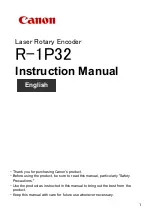
4
9
mally has no way of knowing whether the cable to the other device is intact
and the link pulses are reaching the other end.
FiberAlert
and
LinkLoss
allow
this information to be obtained from the fiber, even when physical access to
a remote device (and its link integrity LED) is not available. (See below for
explanation of features, see page 4 for using the features in a typical applica-
tion).
W
H A T
I
S
F X L
I N K
L
O S S
?
FX LinkLoss
is a troubleshooting feature. When a fault occurs on the fiber
segment of a conversion,
FX LinkLoss
detects the fault and passes this informa-
tion to the twisted pair segment. If a media converter is not receiving a fiber
link,
FX LinkLoss
disables the transmitter on the media converter's twisted pair
port. This results in a loss of link on the device connected to the twisted pair
port.
W
H A T
I
S
T X L
I N K
L
O S S
?
TX LinkLoss
is another troubleshooting feature. When a fault occurs on the
twisted pair segment of a conversion,
TX LinkLoss
detects the fault and passes
this information to the fiber segment. If a media converter is not receiving a
twisted pair link,
TX LinkLoss
disables the transmitter on the media converter's
fiber port. This results in a loss of link on the device connected to the fiber
port.
W
H A T
I
S
F
I B E R
A
L E R T
?
FiberAlert
minimizes the problems
associated with the loss of one
strand of fiber. If a strand is
unavailable, the Black Box device
at the receiver end notes the loss
of link. The device will then stop
transmitting data and the link sig-
nal until a signal or link pulse is
received. The result is that the link
LED on BOTH sides of the fiber connection will go out indicating a fault some-
where in the fiber loop. Using
FiberAlert
, a local site administrator is notified
of a fault and can quickly determine where a cable fault is located.
U
S I N G
F
I B E R
A
L E R T A N D
L
I N K
L
O S S
The following table provides an overview of the troubleshooting features,
their functionality and the recommended settings for a pair of media con-
verters in a typical central/main site to remote site application:
Product with
enabled —Remote Site stops transmitting
Local Link LED is OFF indicating a break in the fiber loop
FiberAlert
XMT
RCV
LED
Remote Site
Local Site
LED OFF = Broken Link
LED
XMT
RCV
Cable Break
W
A R R A N T Y
Contact Black Box for warranty information.
F
I B E R
O
P T I C
C
L E A N I N G
G
U I D E L I N E S
Fiber Optic transmitters and receivers are extremely susceptible to con-
tamination by particles of dirt or dust, which can obstruct the optic path and
cause performance degradation. Good system performance requires clean
optics and connector ferrules.
1) Use fiber patch cords (or connectors, if you terminate your own
fiber) only from a reputable supplier; low-quality components can
cause many hard-to-diagnose problems in an installation.
2) Black Box installs dust caps to ensure factory-clean optical devices.
These protective caps should not be removed until the moment of
connecting the fiber cable to the device. Assure that the fiber is prop-
erly terminated, polished and free as much dust or dirt, and that the
location is as free from dust and dirt as possible.
3) Store spare caps in a dust-free environment such as a sealed plastic
bag or box so that when reinstalled they do not introduce any con-
tamination to the optics.
4) Should it be necessary to disconnect the fiber device, reinstall the
protective dust caps.
5) If you suspect that the optics have been contaminated, alternate
between blasting with clean, dry, compressed air and flushing with
isopropyl alcohol to remove particles of dirt.
E
L E C T R O S T A T I C
D
I S C H A R G E
P
R E C A U T I O N S
Electrostatic discharge (ESD) can cause damage to your add-in modules.
Always observe the following precautions when installing or handling an add-
in module or any board assembly.
1) Do not remove unit from its protective packaging until you’re ready to
install it.
2) Wear an ESD wrist grounding strap before handling any module or
component. If you do not have a wrist strap, maintain grounded con-
tact with the system unit throughout any procedure requiring ESD
protection.
WARNING!
Integrated circuits and fiber optic components are extremely susceptible
to electrostatic discharge damage. Do not handle these components directly unless
you are a qualified service technician and use tools and techniques that conform to
accepted industry practices.
3) Hold boards by the edges only; do not touch the electronic components
or gold connectors.





























